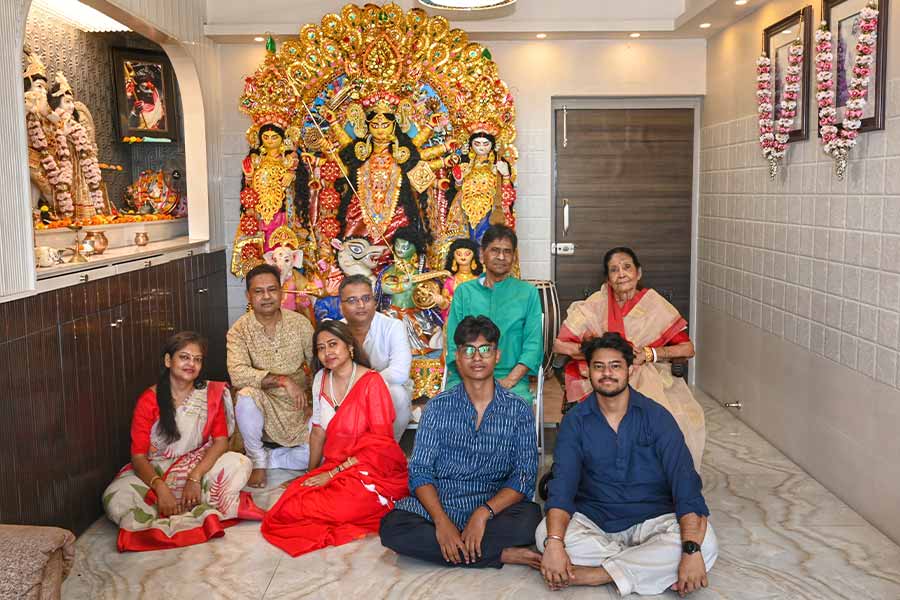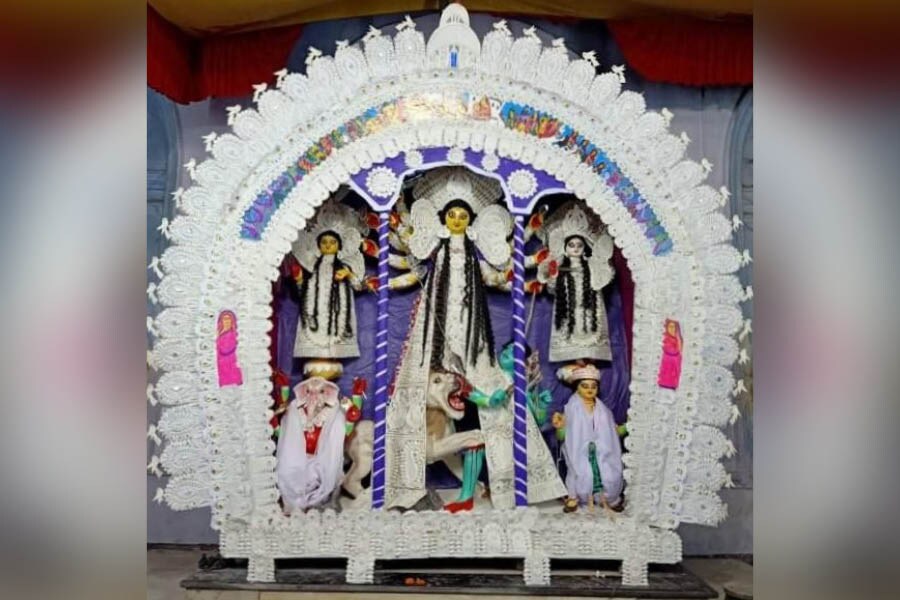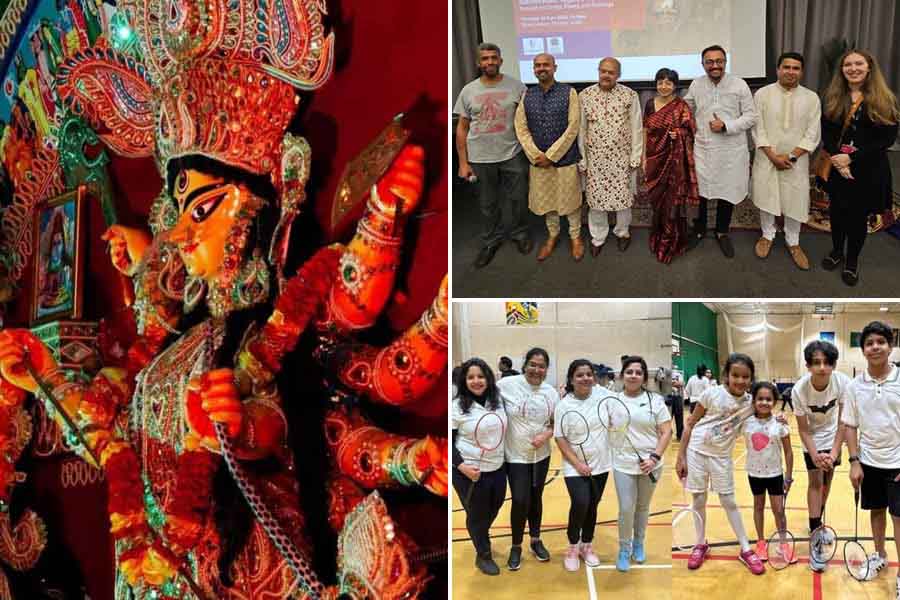In a world of sarbojanin and bonedi bari celebrations, the Saha family perfectly demonstrates that one doesn’t need a palatial mansion or an entire neighbourhood to organise a Durga Puja. The family puja is celebrating its 35th year with all the rituals condensed to suit their the limited space of their apartment minutes away from the Shyambazar five-point crossing,
“The Durga Puja that we celebrate in our apartment is inspired by my great-grandfather Sarat Saha’s ancestral puja in Dhaka. When he moved to Kolkata, the puja had to be discontinued but my grandfather would always tell us stories about it,” said Neeraj Saha, who pioneered its revival along with his sister Shalinee.
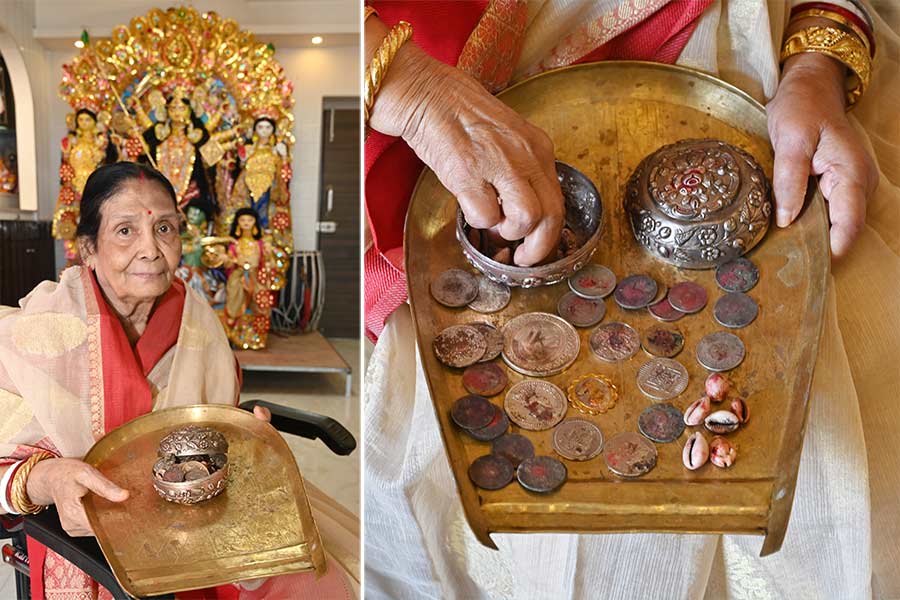
Reba Saha, the matriarch of the house, with an ancient family heirloom. The case comprises silver coins, raw turmeric and cowries that have been presented to the goddess for the past 35 years
Neeraj’s grandfather, Balai Lal Saha, brought this love for the festival to the other side of the border, starting the para’s sarbojanin Durga puja at Shyambazar with his friends. As the years passed, younger members of the para took over the reins of the puja, while older members like Balai Lal were neglected. “The pain of not being a part of the very Durga puja that he had started broke him. He always dreamt of bringing the festival home, where he would be an active part of the celebrations again,” reminisced Neeraj. Balai Lal never got to fulfil his dream. But in 1990, Neeraj decided to make it happen.
To preserve the ethos of the Saha family, he decided to incorporate the rituals from their ancestral Durga puja that his grandfather had told him about when he was a kid. Thirty-five years on, the Saha family Durga puja meticulously follows the century-old rituals from their home in Dhaka.
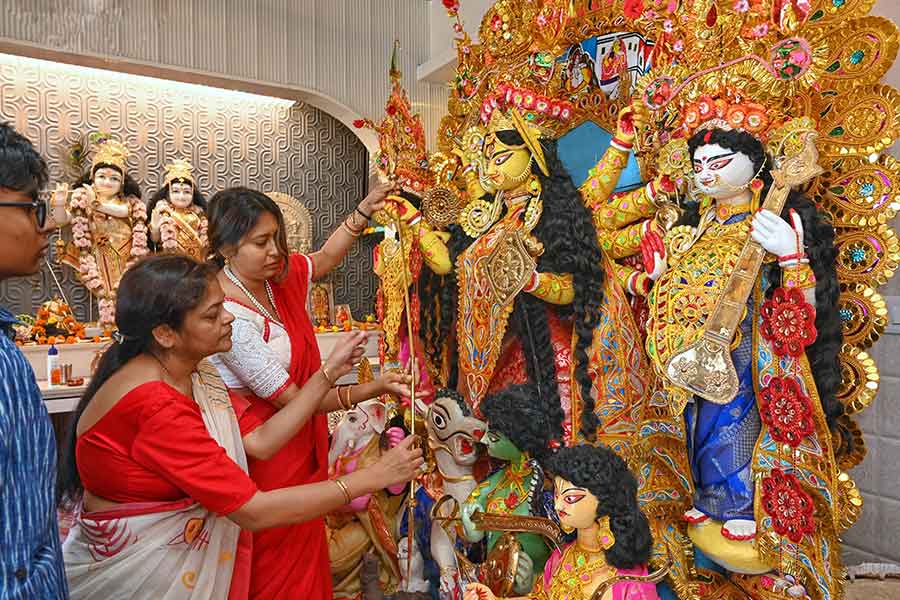
The family has a tradition of placing the weapons on the ‘protima’ themselves on Chaturthi
A core part of the Saha family Durga puja is observing meaningful traditions every day. While the pratima generally arrives on Tritiya, the festivities truly commence on the evening of Panchami, when the family organises a musical presentation. Called Matri Aradhana, this is a special offering from the Sahas to Ma Durga.
Another unique aspect of the festivities is the emphasis on food. The Saptami bhog has 7 items, while there are 8 items on Ashtami, and 9 on Dashami. The thali for bhog is made as a replica of the protima’s different designs, a feat for which the family’s Durga puja has received two awards.
During Sandhi puja, the family doesn’t just offer 108 lotus buds to Durga but also lights 108 diyas and presents 108 plates of bhog. The petals from the lotus are also incorporated into the saris worn by the women of the family.
The darpan visarjan is another integral ritual for the family, where a mirror is placed in a pool of turmeric water, and the image of the protima in the mirror is immersed. “Because we are so particular about our rituals and have something every day, we barely get a chance to go pandal-hopping,” Neeraj said.
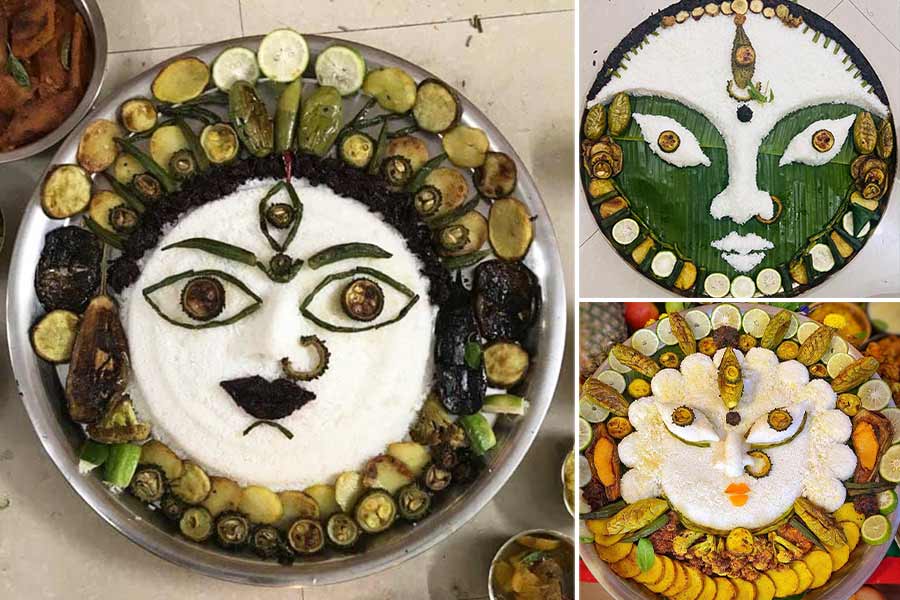
The family has received two awards for its traditional Mahabhog, which is modelled after Ma Durga
The most admirable thing, though, is the Sahas’ dedication to consistency, with the family retaining the same priest and dhaki (drummer) for 35 years. “We’ve made a pledge to never pause or defer our Durga puja, irrespective of whatever happens. Even when there is a death in the family, we will bring in a friend or a close person to perform the puja on our behalf,” Neeraj said.
This promise has held true even when the family moved out of Kolkata for a few years, always returning to the city during the festival. The dedication even persevered as the family transitioned from their old home in Gouribari to an interim flat at Ultadanga, and finally their current apartment near Shyambazar five-point crossing. It is almost akin to an inverse pandal-hopping, where the same Durga puja has changed homes but remained with the same family.
“This Durga Puja isn’t just my grandfather’s incomplete dream. It is the motive of our life and the core of our emotions. Without it, we will not be able to live,” signed off Neeraj.
